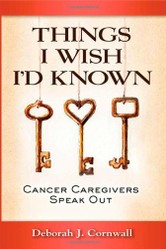Disease of the human coronaries develops cholesterol. Another name is atherosclerosis. There are nearly a dozen names for this phenomenon; however, these are among the most well-known to specialists. In coronary care units, ischemic heart disease is another title which cardiologists have used for diagnosis over the decades. There is impairment in the flow of oxygen and blood in these clients. Naturally, these patients carry a well-known name—heart attack (1, 2, 3, 4).
The presence of acute myocardial infarction is when there has been damage to the heart because of these events. Angina pectoris, on the other hand, is an episode of one-half hour, and it may not progress to an acute myocardial infarction. In any event, there may be controversy among medical doctors over the status of the patient and whether they have some of these findings (1, 2, 3, 4).

Coronary Heart Disease
Coronary heart disease is a chronic illness which leads to accumulation of plaque in the wall of arteries.
Clinical Signs and Symptoms
The descriptions which patients and clinicians write will be such things as shortness of breath. There may be chest discomfort with radiation to the arm or shoulder. They may sweat or feel nauseated. The situation can worsen when congestive heart failure develops—for which there is no specific cure. Nevertheless, there are ways to diagnose and treat clients with either presentation. The management of congestive heart failure presents a similar dilemma as cure is not yet available. In any event, treatments have emerged over the decades to alleviate discomfort (1, 2, 3, 4).
Physicians have long known about risk factors for these illnesses. Some of them are cigarette smoking, excessive body weight, and family history. Others include elevation of blood sugar, hypertension, and abnormalities of blood cholesterol (1, 2, 3, 4).
Health and Technology
Technology has had an important role in progress against cardiac illnesses. Many of the tools today have been important for several decades. However, there have always been methods to enhance diagnosis and management. For example, chest roentgenograms only require a few minutes or even seconds to perform and provide a radiologist’s interpretation. Other tools are electrocardiogram, echocardiogram, exercise stress test, and coronary angiogram. Echocardiogram has also long been useful for heart ailment assessment (1, 2, 3, 4).
As with many infirmities, the outcome often depends on lifestyle. Examples include intake of dietary sodium. Walking or exercise are useful when the doctor agrees with the amount of exercise. As we have long known that cigarette smoking is detrimental to health, one must strongly emphasize these issues. If the client recently had hospitalization, cardiac rehabilitation is important. There must also be an understanding about medication for high blood pressure and irregular rhythms of the heart. Medication to manage them will entail some understanding of their side effects and warning signs when one’s health declines. These matters are important because, coronary heart disease is “… the leading cause of death in the United States.” (1, 2, 3, 4).
Conclusion
Across the globe, infirmities of the human heart have long impaired lifestyles. Much progress over the decades or even centuries have enabled people to be healthier and live longer than in the past. With further research and health behavior change, these situations will continue to improve.
References
- Centers for Disease Control and Prevention. (2019). Coronary artery disease.
- Mayo Clinic. (2020). Coronary artery disease.
- National Institutes of Health. National Heart, Lung, and Blood Institute. (2020). Coronary heart disease.
- National Center for Chronic Disease Prevention and Health Promotion. Centers for Disease Control. (2020). Coronary heart disease.
- Copyright 2020. Michael Koger, Sr., M.D. All rights reserved.
Disclaimer
The information contained in this article is for educational purposes only, and one should not use it for diagnosis or treatment without the opinion of a health professional. Any reader who is concerned about his or her health should contact their physician for advice.
You might also like
How to React to and Help a Loved One with CancerDealing with cancer? Learn how to react, treat and care for a loved one when ...
Do You Have Your Own Cure For Cancer?Is it possible you might be completely unaware of the cancer cure, a natural ...



 The Reality of Aspirinon 05/24/2021
The Reality of Aspirinon 05/24/2021
 An Old Microbeon 03/31/2021
An Old Microbeon 03/31/2021
 Coronavirus and Mental Illnesson 02/14/2021
Coronavirus and Mental Illnesson 02/14/2021
 Acute Ischemic Strokeon 12/25/2020
Acute Ischemic Strokeon 12/25/2020


Comments